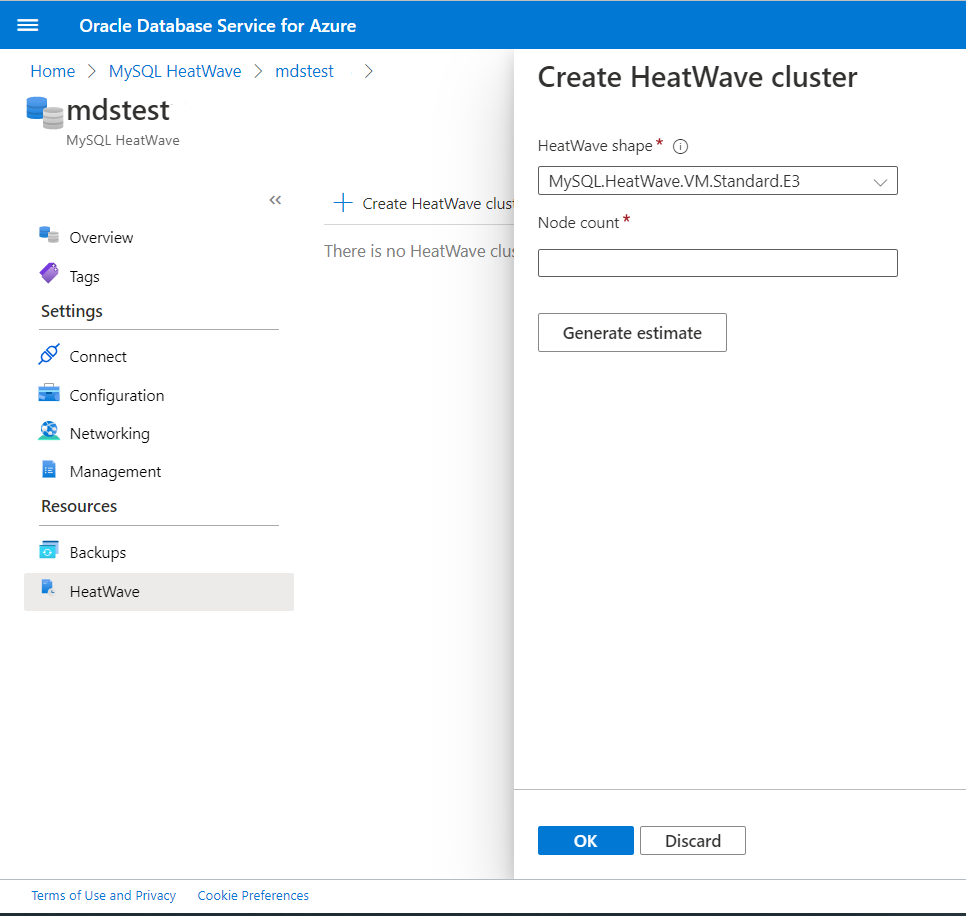Provisioning HeatWave Nodes
When you provision Oracle MySQL HeatWave Cluster in Oracle Database Service for Azure, you can choose to create the HeatWave nodes afterwards using MySQL Autopilot to estimate the HeatWave Cluster size. You can also use this feature to resize a HeatWave Cluster.
Oracle MySQL HeatWave Cluster’s MySQL Autopilot feature can estimate a suitable number of HeatWave nodes based on the data in a database system. You can use this feature once the database system has been created and populated.
If you already have HeatWave nodes and have loaded data into them, all the tables that are currently loaded into the HeatWave Cluster remain loaded during and after the size change, unless you choose to remove them. You do not need to delete the old HeatWave nodes.
Follow these steps to provision HeatWave nodes for a HeatWave Cluster using MySQL Autopilot:
